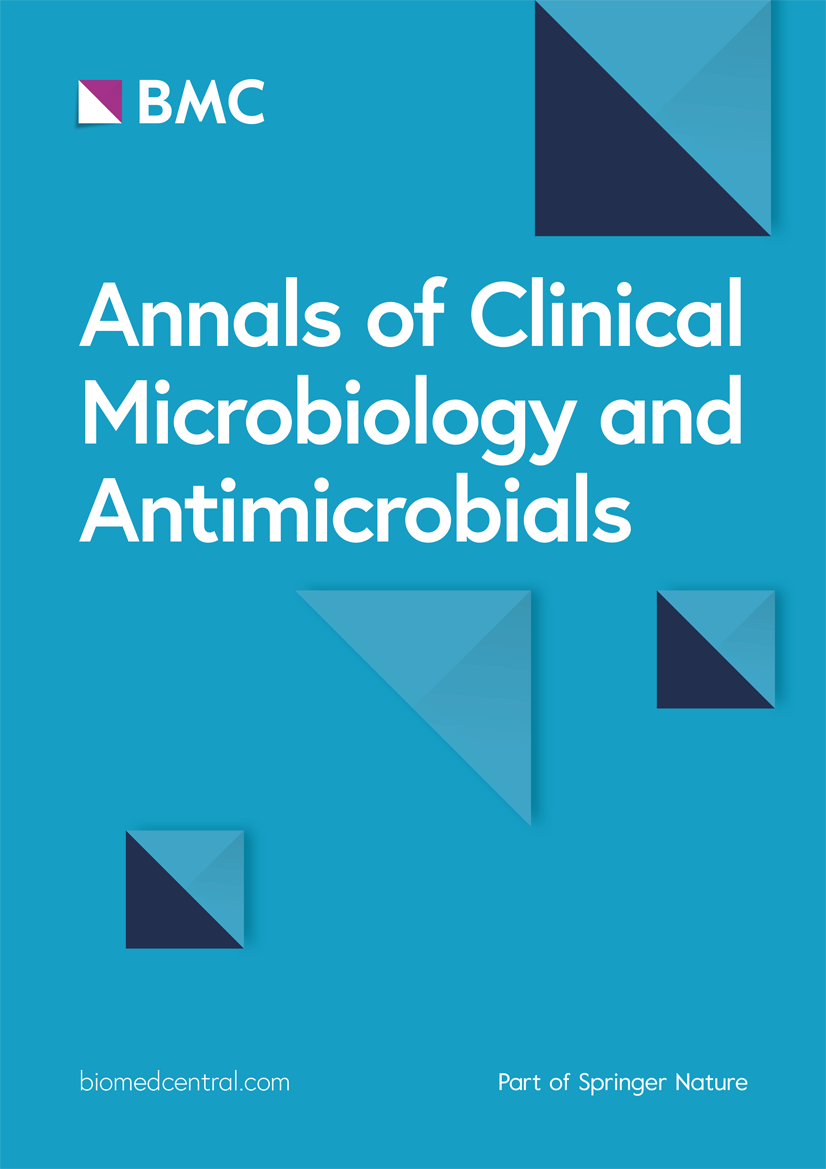基因组流行病学揭示中国临床肠球菌耐利奈唑胺的多重机制
IF 4.6
2区 医学
Q1 MICROBIOLOGY
Annals of Clinical Microbiology and Antimicrobials
Pub Date : 2024-05-04
DOI:10.1186/s12941-024-00689-0
引用次数: 0
摘要
耐利奈唑胺肠球菌(LRE)引起的感染在临床上难以治疗,并威胁着患者的健康。然而,目前国内尚缺乏对长效耐利奈唑胺肠球菌菌株的研究。为此,我们的研究全面揭示了从2011年至2022年在一家中国三级甲等医院采集的耐药肠球菌菌株的耐药机制。在对微生物数据进行回顾性分析后,筛选并验证了肠球菌菌株。随后,对 65 株 LRE 菌株(61 株粪肠球菌和 4 株粪肠球菌,MIC ≥ 8 µg/ml)、1 株利奈唑胺中间型粪肠球菌(MIC = 4 µg/ml)和 1 株利奈唑胺敏感型粪肠球菌(MIC = 1.5 µg/ml)进行了全基因组测序(WGS)分析和生物信息学分析。在我们的研究中,发现 optrA 基因是最常见的利奈唑胺耐药机制。我们在 98.5% 的 LRE 菌株(61 株粪肠球菌和 3 株粪肠球菌)中发现了野生型 OptrA 和各种 OptrA 变体。我们还发现一株耐利奈唑胺的粪肠球菌同时携带 optrA 和 cfr(D) 基因,而一株耐利奈唑胺的粪肠球菌只携带 poxtA 基因。大多数 optrA 基因(55/64)位于质粒上,有 impB-fexA-optrA、impB-fexA-optrA-erm(A)、fexA-optrA-erm(A) 和 fexA-optrA 片段。在具有类似 Tn6674 平台的染色体上发现了少数 optrA 基因(9/64)。此外,在 26 株肠球菌中还发现了其他可能的利奈唑胺耐药性相关机制(rplC 和 rplD 基因突变)。我们的研究表明,在中国的临床 LRE 菌株中存在多种利奈唑胺耐药机制。本文章由计算机程序翻译,如有差异,请以英文原文为准。
Genomic epidemiology reveals multiple mechanisms of linezolid resistance in clinical enterococci in China
Infections caused by linezolid-resistant enterococci (LRE) are clinically difficult to treat and threaten patient health. However, there is a lack of studies on long time-span LRE strains in China. For this reason, our study comprehensively revealed the resistance mechanisms of LRE strains collected in a Chinese tertiary care hospital from 2011 to 2022. Enterococcal strains were screened and verified after retrospective analysis of microbial data. Subsequently, 65 LRE strains (61 Enterococcus faecalis and 4 Enterococcus faecium, MIC ≥ 8 µg/ml), 1 linezolid-intermediate Enterococcus faecium (MIC = 4 µg/ml) and 1 linezolid-susceptible Enterococcus faecium (MIC = 1.5 µg/ml) were submitted for whole-genome sequencing (WGS) analysis and bioinformatics analysis. The optrA gene was found to be the most common linezolid resistance mechanism in our study. We identified the wild-type OptrA and various OptrA variants in 98.5% of LRE strains (61 Enterococcus faecalis and 3 Enterococcus faecium). We also found one linezolid-resistant Enterococcus faecium strain carried both optrA and cfr(D) gene, while one linezolid-resistant Enterococcus faecium only harbored the poxtA gene. Most optrA genes (55/64) were located on plasmids, with impB-fexA-optrA, impB-fexA-optrA-erm(A), fexA-optrA-erm(A), and fexA-optrA segments. A minority of optrA genes (9/64) were found on chromosomes with the Tn6674-like platform. Besides, other possible linezolid resistance-associated mechanisms (mutations in the rplC and rplD genes) were also found in 26 enterococcal strains. Our study suggested that multiple mechanisms of linezolid resistance exist among clinical LRE strains in China.
求助全文
通过发布文献求助,成功后即可免费获取论文全文。
去求助
来源期刊

Annals of Clinical Microbiology and Antimicrobials
MICROBIOLOGY-
CiteScore
8.60
自引率
0.00%
发文量
49
审稿时长
>12 weeks
期刊介绍:
Annals of Clinical Microbiology and Antimicrobials considers good quality, novel and international research of more than regional relevance. Research must include epidemiological and/or clinical information about isolates, and the journal covers the clinical microbiology of bacteria, viruses and fungi, as well as antimicrobial treatment of infectious diseases.
Annals of Clinical Microbiology and Antimicrobials is an open access, peer-reviewed journal focusing on information concerning clinical microbiology, infectious diseases and antimicrobials. The management of infectious disease is dependent on correct diagnosis and appropriate antimicrobial treatment, and with this in mind, the journal aims to improve the communication between laboratory and clinical science in the field of clinical microbiology and antimicrobial treatment. Furthermore, the journal has no restrictions on space or access; this ensures that the journal can reach the widest possible audience.
 求助内容:
求助内容: 应助结果提醒方式:
应助结果提醒方式:


